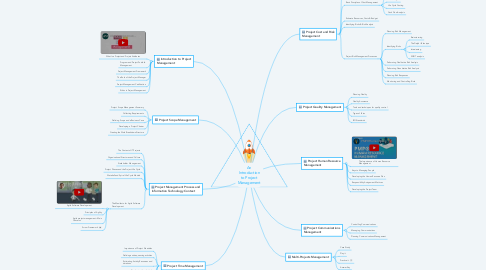An Introduction to Project Management
af Pedro Serra


1. Introduction to Project Management
1.1. What Is a Project and Project Attributes
1.2. Program and Project Portfolio Management
1.3. Project Management Framework
1.4. The Role of the Project Manager
1.5. Project Management Certification
1.6. Ethics in Project Management
2. Project Scope Management
2.1. Project Scope Management Summary
2.2. Collecting Requirements
2.3. Defining Scope and a Business Case
2.4. Developing a Project Charter
2.5. Creating the Work Breakdown Structure
3. Project Management Process and Information Technology Context
3.1. The Context of IT Projects
3.2. Organizational Structures and Culture
3.3. Stakeholder Management
3.4. Project Phases and the Project Life Cycle
3.5. Waterfall and Spiral Life Cycle Models
3.6. The Manifesto for Agile Software Development
3.6.1. Agile Software Development
3.6.2. Principles of Agility
3.6.3. Agile project management –Main Concerns
3.6.4. Scrum Framework
4. Project Time Management
4.1. Importance of Project Schedules
4.2. Defining and sequencing activities
4.3. Estimating Activity Resources and durations
4.4. Developing the schedule
4.5. Gantt Charts
4.6. Critical Path Method
5. Project Cost and Risk Management
5.1. Project Cost Management Processes
5.2. Basic Principles of Cost Management
5.2.1. Profits
5.2.2. Profit Margin
5.2.3. Life Cycle Costing
5.2.4. Cash Flow Analysis
5.3. Estimate Resources, Costs & Budget
5.4. Identifying Risks & Risk Analysis
5.5. Project Risk Management Processes
5.5.1. Planning Risk Management
5.5.2. Identifying Risks
5.5.2.1. Brainstorming
5.5.2.2. The Delphi Technique
5.5.2.3. Interviewing
5.5.2.4. SWOT analysis
5.5.3. Performing Qualitative Risk Analysis
5.5.4. Performing Quantitative Risk Analysis
5.5.5. Planning Risk Responses
5.5.6. Monitoring and Controlling Risks
